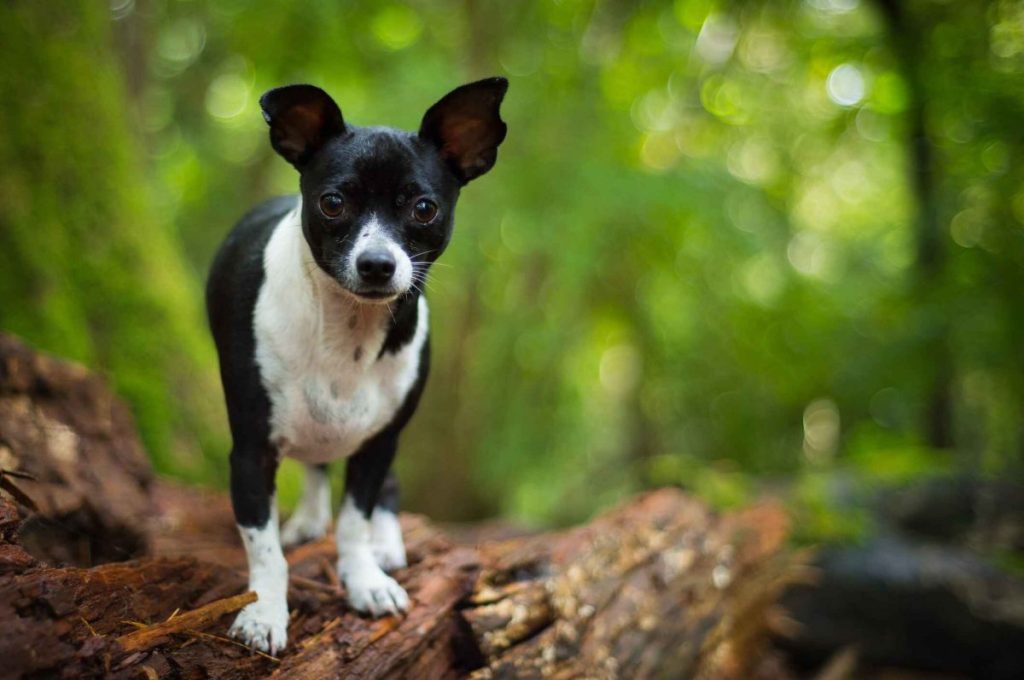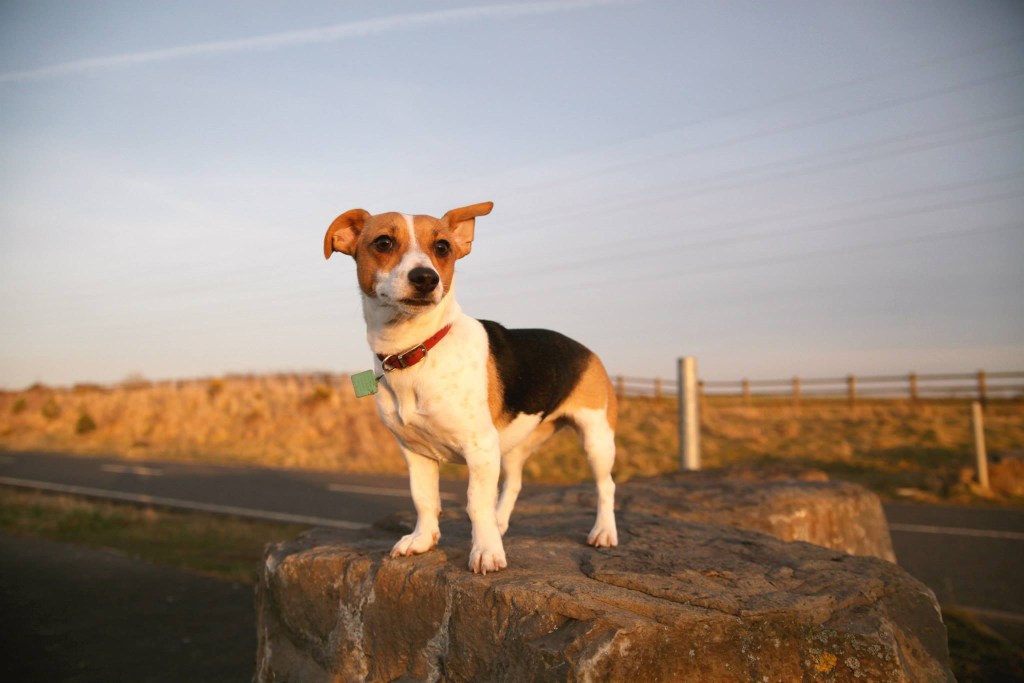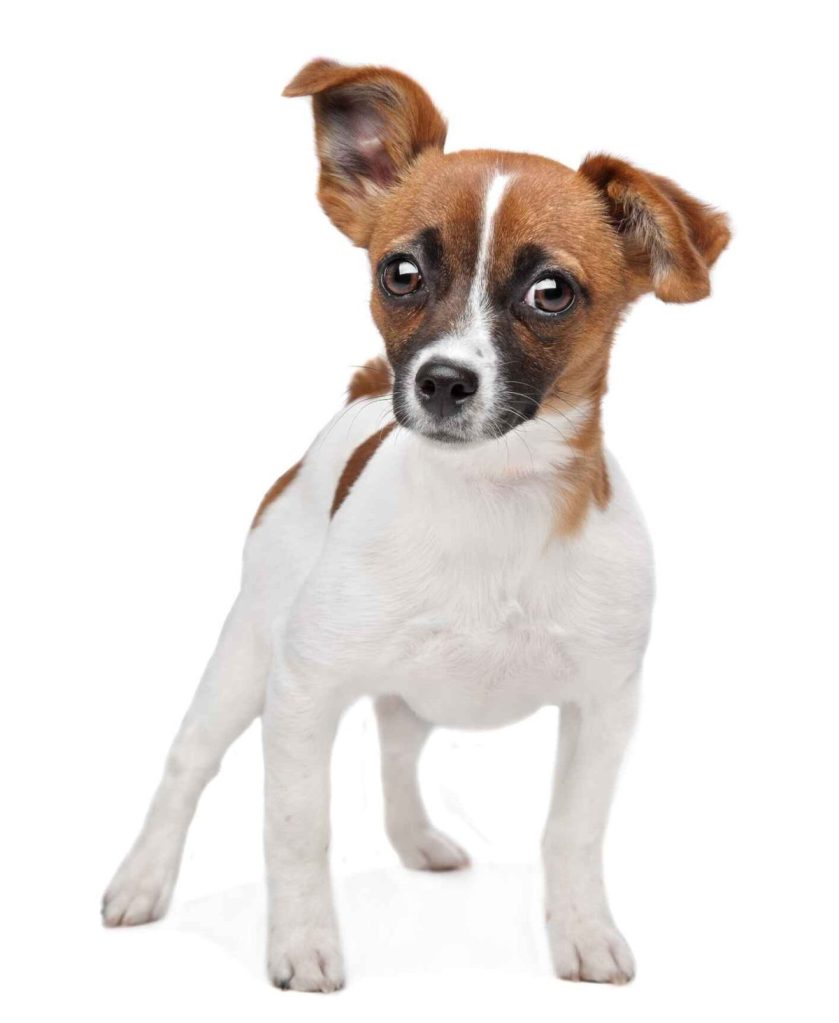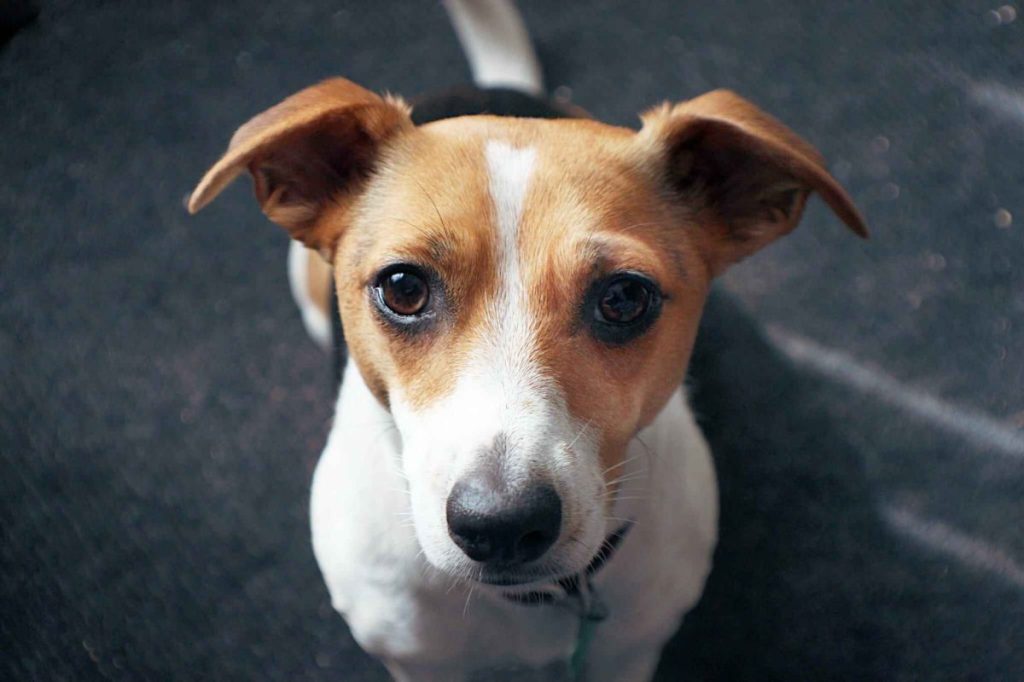The Jack Chi, also known as the Jackahuahua, is a small cross between the Jack Russell Terrier and Chihuahua dog breeds. Friendly, playful, and energetic, these spunky companions inherited some of the best qualities from both of their parents. Weighing roughly 8 to 18 pounds, the Jack Chi is compact and sturdy, similar to their Jack Russell Terrier lineage, with a short, sleek coat that comes in various colors including white, tan, black, and combinations.
In terms of personality, Jack Chis are affectionate and loyal. They often form strong bonds with their owners, sometimes even becoming rather protective of them thanks to their Chihuahua-influenced temperament. They are intelligent and active dogs who thrive on mental and physical stimulation, making them excellent for families who can keep up with their playful energy. While they are friendly and social, they may be wary of strangers, another trait inherited from their Chihuahua lineage. Early socialization and training are crucial to ensure they develop into well-rounded pets.
Jack Chi characteristics
- Weight: 12 to 15 inches
- Height: 8 to 18 pounds
- Lifespan: 13 to 18 years
Coat and color variations
Jack Chis have short to medium-length coats that can vary in texture, often depending on which parent breed they take after more. Their coats are typically smooth and sleek, though some may inherit a slightly rougher texture from the Jack Russell side. When it comes to color, Jack Chis exhibit a wide range of possibilities, including solid, bi-color, or tri-color patterns. Common coat colors include black, white, tan, brown, and cream, often combined in unique markings such as patches or spots. Some Jack Chis may even display a brindle or merle pattern. Their low-maintenance coats make grooming relatively easy, usually requiring only regular brushing to keep them looking tidy and healthy.
Physical traits and appearance
Size and build
- Size: Small, typically weighing 8–18 pounds and standing 10–15 inches tall.
- Build: Compact and athletic, with a muscular yet slender frame.
Coat characteristics
- Coat: Short to medium length; smooth and sleek or slightly rough.
- Colors: Wide variety, including black, white, tan, brown, cream, brindle, and merle; can be solid, bi-color, or tri-color.
Other physical features
- Face: Often features the expressive eyes and perky ears of a Chihuahua; ears may be erect, semi-erect, or floppy.
- Tail: Can be long and straight like a Jack Russell’s or slightly curved.
- Paws: Small and delicate, yet sturdy for their size.
Jack Chi personality
The Jack Chi is known for their spirited personality, inhering the energetic nature of the Jack Russell Terrier and the loyal, sometimes feisty traits of the Chihuahua. Jack Russell Chihuahuas are highly social and thrive on interaction with their family, forming strong bonds with their owners. They are playful and love to be involved in daily activities, whether it’s going for a walk, playing fetch, or simply snuggling on the couch. Their small size doesn’t diminish their confidence, and they often display a bold, outgoing attitude.
While they are loving and friendly with their families, Jack Chis may exhibit a wary or protective demeanor around strangers, a trait inherited from the Chihuahua side. Early socialization is crucial to help them become more comfortable in new environments and with unfamiliar people. They are intelligent dogs that respond well to training, although their independent streak may require patience and consistency. Jack Chis are also known for their alertness and may bark to signal any unusual activity, making them good watchdogs despite their size. With proper training and socialization, they make loyal, fun-loving companions well-suited for families, singles, and seniors alike.

Behavior and temperament traits
- Energetic: Highly active and playful, requiring regular exercise.
- Affectionate: Forms strong bonds with family members; enjoys cuddling.
- Social: Friendly with family but may be reserved or cautious around strangers.
- Loyal: Devoted and protective of their owners.
- Intelligent: Quick learners but can exhibit a stubborn streak.
- Alert: Vigilant and prone to barking at unfamiliar noises or visitors.
- Confident: Bold and fearless, often displaying a larger-than-life attitude.
- Independent: Can have moments of self-sufficiency, though they prefer companionship.
- Playful: Thrives on interactive games and mental stimulation.
- Protective: May act as a small watchdog, alerting owners to potential threats.
Training and socialization
Early socialization and positive reinforcement training are crucial due to their intelligence and potential stubbornness. Of course, their intelligence allows them to pick up commands quickly, so early training is key to establishing good behavior from the start. Use praise, treats, and affection to reward desired behavior. Jack Chis respond well to positive reinforcement, and this approach will keep them motivated and engaged.
Training tips:
- Be Consistent: Consistency is crucial in training. Use the same commands and routines to avoid confusion. This helps your Jack Chi understand what is expected of them.
- Keep Training Sessions Short and Fun: Jack Chis are intelligent but can lose interest if training sessions are too long or repetitive. Keep sessions short (10-15 minutes) and engage with varied activities.
- Mental Stimulation: While they are small, their Jack Russell Terrier lineage means they have a high energy level and a love for activity. Without sufficient mental stimulation and exercise, Jack Chis may become bored or restless, which can lead to unwanted behaviors such as chewing or excessive barking.
Jack Chi care
As with all dogs, it’s important to keep up your Jack Russell Terrier Chihuahua mix’s regular veterinary checkups to detect any health concerns early. Your vet can help you develop a care routine that will keep your dog healthy.
How much exercise does a Jack Chi need?
Jack Chis require a moderate amount of daily exercise to keep them healthy and happy. They typically need about 30 to 60 minutes of exercise per day, which can include a mix of walks, playtime, and mental stimulation.

How to groom a Jack Chi
Grooming a Jack Russell Chihuahua involves maintaining their coat, ears, nails, and teeth. Their grooming needs are typically straightforward due to the low-maitenance coat of parent breeds.
Brushing
- Brush 1–2 times per week using a soft-bristle brush or grooming mitt.
- Use a deshedding tool during seasonal shedding periods if necessary to manage loose fur.
Bathing
- Frequency: Bathe every 4–6 weeks or as needed (if they get dirty).
- Products: Use a dog-specific shampoo to avoid skin irritation.
- Tips: Ensure thorough rinsing to prevent residue, which can cause itching.
Nails and ears
- Trim nails every 3–4 weeks using dog nail clippers or a grinder when you hear them clicking on the floor. Be cautious of the quick (the blood vessel in the nail).
- Check and clean ears weekly using a vet-approved ear cleaner and cotton pads. Gently wipe the outer ear; avoid inserting anything deep into the ear canal.
Dental care
- Brush teeth 2–3 times per week, if possible daily. Use a dog toothbrush and dog-friendly toothpaste. Never use human toothpaste!
Eye cleaning
- Clean as needed if you notice discharge. Use a soft, damp cloth or vet-approved eye wipes. Gently wipe around the eyes to avoid irritation.
Flea, tick, and parasite control
Keep up with flea and tick prevention treatments, especially if your Jac Chi spends much time outdoors. Regular grooming allows you to spot parasites early.
Early acclimation is key
Getting your Jack Chi accustomed to grooming procedures from a young age makes the process easier and more enjoyable for both of you. Handle their paws frequently, examine their mouth and ears, and reward them for good behavior during grooming sessions. This positive foundation sets the stage for stress-free veterinary exams and handling throughout their lives.
Feeding and nutrition
An ideal Jack Chi diet should be formulated for a small-sized breed with medium energy. It is important to make sure your Jack Chi doesn’t overeat as, just like other small dogs, their bodies do not handle excess weight well. As with all dogs, the Jack Chi’s dietary needs will change from puppyhood to adulthood and will continue to change into their senior years. You should ask your veterinarian for recommendations about your Jack Chi’s diet, as there is far too much variation among individual dogs.
Daily caloric needs:
- Jack Chis typically require 250–500 calories per day, depending on their size, age, and activity level.
- Puppies: Need more frequent meals (3–4 times a day) to support growth.
- Adults: Usually thrive on 2 meals per day.
Portion Sizes:
- Small-sized Jack Chis (8–12 lbs): ½ to 1 cup of food daily.
- Larger Jack Chis (12–18 lbs): 1 to 1¼ cups daily.
Jack Chi and family compatibility
The Jack Chi is an excellent choice for families due to their affectionate and playful nature. These dogs form strong bonds with their owners and thrive in environments where they can be part of the action. Their small size makes them suitable for families with limited space, such as those living in apartments, but they do best in homes where they receive plenty of attention and activity. Jack Chis are known for their energetic and lively personalities, making them great playmates for older children who can handle their enthusiasm. However, due to their small size and delicate build, they should be supervised around younger children to prevent accidental injuries.
Are Jack Chis good with other dogs?
Jack Chis can get along well with other dogs, but their compatibility often depends on their individual temperament and socialization. Their Jack Russell Terrier lineage brings a strong prey drive and a bold, sometimes dominant personality, while their Chihuahua side may make them a bit wary or territorial. However, with proper introductions and early socialization, Jack Chis can learn to coexist peacefully with other dogs.
Heatlh issues
Jack Chis are generally healthy dogs, but like all breeds, they can be prone to certain health issues. Regular vet visits are essential for maintaining their health. Common health problems that Jack Chis may experience include:
- Patellar Luxation: A condition where the kneecap dislocates or moves out of its normal position, causing lameness or difficulty walking.
- Tracheal Collapse: A condition where the windpipe becomes weakened and partially collapses, leading to coughing, wheezing, and difficulty breathing.
- Heart Problems: Jack Chis may be prone to heart conditions, such as heart murmurs or valve problems, which can cause fatigue and breathing difficulties.
- Hypoglycemia: Low blood sugar levels, which can lead to symptoms such as lethargy, weakness, and in severe cases, seizures, especially in puppies or small dogs.

Rescue groups
It may be hard to find a breed-specific rescue for Jack Chis because they are a mixed breed. However, you may want to try Jack Russell Terrier or Chihuahua breed-specific rescues, as they often care for mixes, as well. Here are some rescues you can try:
How much are Jack Chi puppies?
The price of a Jackahuahua puppy typically ranges from $500 to $1,000. The cost can vary based on factors such as the breeder’s reputation, the puppy’s bloodline, and location. While the Jack Chi isn’t a highly trendy designer breed, there are still reputable breeders who specialize in them. However, a great option to consider is starting with rescues, where you may find a loving companion at a more affordable price.













